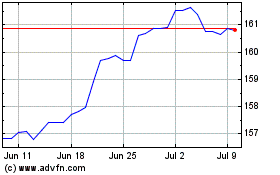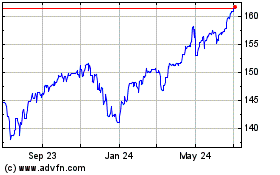U.S. Dollar Weakens Amid Trump Controversy
May 16 2017 - 12:04AM
RTTF2
The U.S. dollar declined against its major counterparts in early
European deals on Tuesday, as investors became cautious over news
that the U.S. Donald Trump had reportedly disclosed highly
classified information to Russian officials during a meeting last
week, eroding his support from Republicans and putting his economic
agenda in trouble.
The Washington Post reported on Monday that Trump revealed a
classified information about a planned Islamic State operation to
Russian Foreign Minister Sergei Lavrov and Russian Ambassador
Sergei Kislyak, which had been tightly restricted within the United
States government and among close US allies.
The information shared with the Russians, according to the
Washington Post report, is said to have endangered cooperation from
the U.S. ally that had access to the inner workings of the Islamic
State.
Further weighing on the currency was a disappointing report on
New York Fed's Empire Manufacturing survey in May, which came on
the heels of weak retail sales and inflation data on Friday.
According to the CME FedWatch Tool, the likelihood of a 25 basis
point hike in June had dropped to 70 percent following the
report.
The U.S. treasury yields declined, with the benchmark yield on
10-year treasuries falling 2.33 percent, while that of 2-year
equivalent was down by 1.30 percent. Yields move inversely to bond
prices.
Investors await reports on housing market and industrial
production later in the day for more clues about the economy.
The currency was lower against its major rivals on Friday, with
the exception of the yen.
The greenback that closed yesterday's trading at 1.2894 against
the pound declined to 1.2933. The next possible support for the
greenback is seen around the 1.30 region.
The greenback slid to 1.1036 against the euro, its lowest since
November 2016. Continuation of the greenback's downtrend may see it
challenging support around the 1.115 area.
The greenback weakened to an 8-day low of 0.9923 against the
Swiss franc, compared to 0.9965 hit late New York Monday. The
greenback is seen finding support around the 0.97 mark.
The greenback reversed from an early high of 113.79 against the
yen, edging down to 113.25. If the greenback-yen pair extends
decline, it may locate support around the 112.5 level.
Figures from the Ministry of Economy, Trade and Industry showed
that Japan's tertiary activity index decreased unexpectedly in
March.
The tertiary activity index dropped 0.2 percent month-over-month
in March, after remaining flat in February. Meanwhile, economists
had expected a 0.1 percent increase for the month.
The greenback retreated to 1.3606 against the loonie and 0.7431
against the aussie, from its early highs of 1.3638 and 0.7405,
respectively. On the downside, 1.33 and 0.755 are possibly seen as
the next support levels for the greenback against the loonie and
the aussie, respectively.
Looking ahead, U.K. consumer and producer prices for April and
house price index for March, German ZEW economic sentiment index
for May, Eurozone GDP data for the first quarter and trade data for
March are due shortly.
In the New York session, U.S. building permits, housing starts
and industrial production for April are set for release.
At 11:30 am ET, the European Central Bank Governing Council
member Ewald Nowotny speaks about monetary policy at an event
hosted by the Principality of Liechtenstein, in Vienna.
The European Central Bank board member Benoit Coeure speaks at
the annual dinner of the ECB's Bond Market Contact Group in
Frankfurt, Germany at 1:00 pm ET.
US Dollar vs Yen (FX:USDJPY)
Forex Chart
From Mar 2024 to Apr 2024

US Dollar vs Yen (FX:USDJPY)
Forex Chart
From Apr 2023 to Apr 2024
